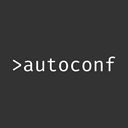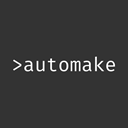Top Ninja Build Alternatives for Faster, Smarter Builds
Ninja Build is a small, fast build system designed to have its input files generated by a higher-level build system and to run builds as quickly as possible. While its speed is a major advantage, developers often seek alternatives for various reasons, including broader platform support, more feature-rich environments, or different workflow preferences. This article explores the best Ninja Build alternative options available to streamline your software development process.
Top Ninja Build Alternatives
Whether you're looking for cross-platform compatibility, advanced build features, or a more integrated development experience, these alternatives offer robust solutions to meet your specific project needs. Let's dive into some of the most popular and effective build systems that can serve as excellent replacements for Ninja Build.

CMake
CMake is a powerful family of tools used for building, testing, and packaging software. As a free, open-source, and cross-platform solution (Mac, Windows, Linux, Haiku), it provides robust C++ and C support, making it an excellent Ninja Build alternative for complex projects requiring flexible build configurations across different operating systems.

GNU Make
Make is a classic and widely used tool for controlling the generation of executables and other non-source files from a program's source files. It's a free, open-source solution available on Mac, Windows, Linux, BSD, and Cygwin, offering a foundational and reliable Ninja Build alternative for projects that benefit from its simplicity and ubiquitous presence.

SCons
SCons is an Open Source software construction tool, often considered a next-generation build tool and an improved, cross-platform substitute for the classic Make. Available for free on Mac, Windows, and Linux, its cross-platform feature makes it a strong Ninja Build alternative for developers seeking a more modern and flexible build system.

Premake
Premake offers powerfully simple build configuration, allowing you to describe your software project once with its easy-to-read syntax and build it everywhere. It's a free, open-source, cross-platform, and portable solution (Mac, Windows, Linux), making it an excellent Ninja Build alternative for projects that prioritize simplicity and broad compatibility.

Ant
Apache Ant is an Open Source Java-based build tool that uses XML files to describe, structure, and control the build process. As a free, open-source solution for Mac, Windows, and Linux, Ant is a suitable Ninja Build alternative for Java-centric projects, offering extensive flexibility through its XML-based configuration.

qmake
qmake is a tool from The Qt Company that simplifies the build process for development projects across different platforms by automating the generation of Makefiles. This free, open-source, and cross-platform solution (Mac, Windows, Linux) serves as a valuable Ninja Build alternative, especially for projects leveraging the Qt framework.

Autoconf
Autoconf provides macros to produce shell scripts for automatically configuring source code packages. It is a free, open-source solution primarily for Linux, making it a relevant Ninja Build alternative for developers working within the GNU build system ecosystem, focusing on portability across Unix-like systems.

waf
Waf is a Python-based framework for configuring, compiling, and installing applications. It's a free, open-source, and cross-platform tool (Mac, Windows, Linux, Xcode, Eclipse, Microsoft Visual Studio), offering portability and flexibility. Waf is an excellent Ninja Build alternative for projects that prefer Python-based scripting for their build process.

Automake
Automake automatically generates Makefile.in files compliant with the GNU Coding Standards. As a free, open-source solution primarily for Linux, Automake is a key Ninja Build alternative for projects deeply integrated into the GNU Autotools build system, ensuring consistency and adherence to established standards.
Exploring these Ninja Build alternative options reveals a diverse landscape of build systems, each with unique strengths. Your choice will depend on factors like your project's programming language, target platforms, desired level of control, and team's familiarity with specific tools. We encourage you to delve deeper into each alternative to find the best fit that optimizes your development workflow and build efficiency.